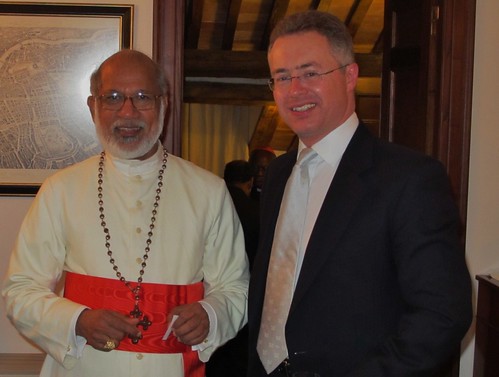
The senior leadership of the global Catholic Church has been in Rome over the last week to celebrate the latest Consistory of Cardinals, at which 22 new Cardinals were installed. These included the Major Archbishop of Ernakulam-Angamalay of the Syr-Malabars, in Kerala in India, His Eminence George Alencherry. Our congratulations go out to him and the other new Cardinals as they take up their new responsibilities.
Cardinal Alencherry and a number of other Cardinals, including a strong contingent from Commonwealth countries (including India, Australia, Ghana, Nigeria and Zambia, as well as from England and Scotland) joined me at my Residence after the Consistory for a celebratory event. One issue we discussed was how the network of the Commonwealth of Nations and the Catholic Church might be able to do more together. The question had been raised by Lord Howell during the visit of the British Government delegation to the Holy See the previous week. As he noted, the objectives of the two networks – centred on the human individual, working for development and world peace, and focused on education, healthcare, good governance, democracy – are remarkably similar. Perhaps we should look at what can do together?
In a modern world that is moving away from static blocs to more dynamic network structures and relationships, the idea struck me – and a number of the Cardinals – as one worth exploring. The fluid nature of global networking probably argues against anything too structured or rigid. But aligning the global impact of Catholic networks, present in most Commonwealth countries and representing over 1.2 billion people, with that of the family of 54 Commonwealth nations and their combined 2.1 billion population, seems to make real sense. What do you think?
